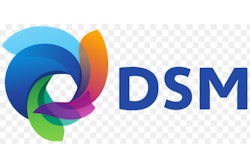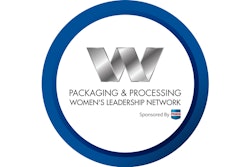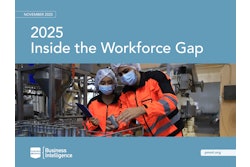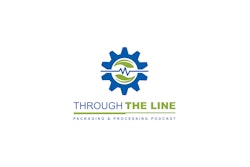Hi, I'm Matt Reynolds, editor of Packaging World Magazine, here at the end of Day One at Interpack in Dusseldorf, Germany. So when I was here six whole years ago in 2017, that was right at the very beginning of the linear track system revolution that's been gripping packaging ever since. Back then, I was looking as closely as I can in every machine trying to find out whether they had an XTS from Beckhoff, an iTRAK from Rockwell, or a ACOPOStrak from B&R, and very few did.
It was right at the beginning of that sort of technology. Today, it's everywhere. There's track systems all over the place. But hot on the heels of these linear tracks system technologies is a brand new technology that's a wholly independent mover technology using tiles or shuttles that are either levitating completely using magnetics or they're potentially just, independent movers using a robotics with wheels or something along those lines.
Sensors being driven by optics and connected by radio waves. Regardless, the idea is there's all sorts of areas of movement that mechanical or even track systems couldn't accomplish. And now in 2023, it's really starting to see that kind of adoption growth. The first one of the independent movement I saw this morning was from Schubert.
So more on Schubert. Well, this Interpack demo at Schubert wasn't a quote unquote real packaging application. It was a thought-provoking illustration of how independently moving shuttles with free range of movement, even free from tracks, could be applied to packaging in the future. Some of the applications that we’ll soon talk about use tiles that levitate on a magnetic field, this isn't one of those systems.
These are what Schubert calls togglers, and their movement is on an uncharged, unelectrified, plain old plate. It's entirely based on optical detection systems controlling them via radio. That's why each toggler has a barcode on the top of it. By going this route instead of a magnetically levitating tile, Schubert is reducing the amount of electronic complexity in the system while still demonstrating some of the potential of independent movement.
It's not quite ready for prime time, but it piqued my interest and I'll be wondering what kinds of applications these togglers will be on in the future.
Here's another system that caught my eye given that independently moving shuttles on a track system, Kosme, a Krones company, was demonstrating its X3M concept machine using an ACOPOStrak system from B&R.
The X3M is a patented all-in-one container handling system for filling, capping, and labeling, that maximizes flexibility for applications like personal care products, shampoo, conditioner, household cleaners, and so on. This Kosme machine can handle high variability, so it could even work for customizable products or low volume, high mix, high variability.
This machine has a small footprint. It's energy efficient, and it used biphasic or hygienic filling technology, and it can run at 6,000 bottles per hour for 750 milliliter bottles, so it's quick.
Elsewhere on the show floor. Beckhoff demonstrated a trio of new, newer, and newest technologies with its linear track system, wireless shuttle charging, and levitating tile technologies all working in concert.
This demo is featuring its existing XTS linear track system, but with a new and patented NCT, or no cable technology. With NCT, as each shuttle passes over the strip, it recharges a bit, meaning each shuttle can actually carry power for additional functions.
This charges is up to 35 watts continuous, or 75 peak, so vacuums or servos and the like be placed on shuttles or movers themselves and powered wirelessly. Now underneath the XTS with NCT is Beckhoff's new XPlanar technology, which consists of tally levitating tiles. These tiles have as many as six dimensions of mobility in that they can move on the traditional X, Y, and Z axes, plus they can rotate and tip horizontally back and forth on end.
Rumor has it, there may be at least one application on the Interpack floor, stainless wash-down version that carries cold cuts of lunch meat. I'll be on the lookout.
Everything we've seen so far has been a standalone demo. So to wrap things up from inter pack's day one, here's a levitating shuttle application integrated into real secondary package.
In this case, OEM SOMIC has integrated levitating tiles from Canadian company Planar. Now, as you can see, there's four different infeeds from which these shuttles collect and collate product for secondary product packaging.
At the demonstrated clip of 60 bags a minute per infeed, that's 240 packs a minute coming out at the end in case form.
Now imagine each infeed is delivering different flavors of chips for a rainbow packs, variety packs, mixed packs, all possibly coming from totally different upstream sources. And maybe at very different frequencies. You might even have one extra fast infeed or one extra slow to deliver a five-by-three or three-by-one 12 pack pattern.
And with the levitating shuttles SOMIC can change the orientation of different stacks inside the package without using robotic pick-and-place systems, instead collecting everything on top of each shuttle. And once those product groups are created, they're transferred on for case packing. Now once you see the stuff in action, you really begin to think about the possibilities here.
Uh, one last point we should make about these levitating systems, because they're not touching anything on the electromagnet field on which they ride, they're really not generating any dust. They're not generating any particles. There's basically nothing that's keeping them from moving. This is all really interesting stuff.
So that's just a brief snapshot of the independent mover systems, both track-based and levitating that I saw just on day one. Uh, I happen to know of at least two other systems. One is an adaptive packaging machine by Rotzinger, and that's using Industrial Wireless by CoreTigo. I haven't seen that yet. I'm gonna be seeing it in the next couple of days.
And also, I'm aware of a R.A Jones application that uses levitating shuttles, the B&R ACOPOStrak 6D system. So I'm also gonna be seeing that one. I'll be sure to report on them and send some video, uh, your way when I have it. That's all from Interpack day one.






















